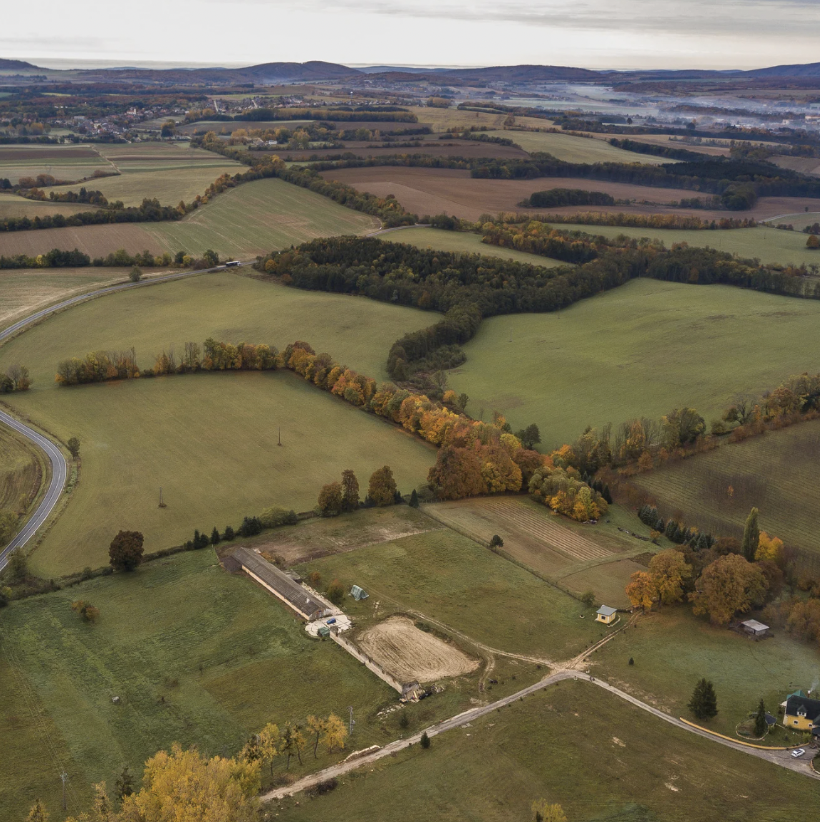
What Is Biodiversity Net Gain And What Does This Mean For Developers
Discover the concept of biodiversity net gain and its implications for developers in our
insightful blog
Biodiversity net gain is a concept that holds immense significance in the realms of environmental conservation and sustainable development. As concerns about biodiversity loss grow, governments and organisations are adopting policies to ensure that development projects minimise their impact on ecosystems and contribute to habitat creation and enhancement.
This blog post will delve into the meaning of biodiversity net gain and discuss its implications for developers. Additionally, we will explore the role of local planning authorities and the use of biodiversity units in achieving this vital objective.
Defining Biodiversity Net Gain
At its core, biodiversity net gain refers to the principle of enhancing biodiversity in a specific area as a direct result of development activities. It acknowledges that while development projects may cause ecological losses, it is crucial to compensate for them by delivering measurable and lasting gains in biodiversity elsewhere. The ultimate goal of delivering net gain is to leave the natural environment in a better state than it was before the project commenced.

Importance of Achieving Biodiversity Net Gain
The significance ecological importance of biodiversity net gain cannot be overstated. By actively enhancing biodiversity, developers play a vital role in protecting and enhancing the natural world. Biodiversity net gain helps restore ecosystems, improve biodiversity, safeguard species diversity, and maintain the essential services nature provides. Moreover, achieving net gain is essential for meeting legal and regulatory requirements pertaining to environmental protection.
Economic Benefits for Developers
Implementing biodiversity net gain in development projects brings numerous economic advantages for developers. By enhancing and restoring natural ecosystems, developers can create attractive and sustainable environments that increase property values and attract potential buyers or tenants. Additionally, biodiversity net gain improves the overall quality of the development, leading to an enhanced reputation and increased market demand.
Taking mandatory biodiversity net gain considerations and environmental management into account from the initial stages of a project can also reduce long-term maintenance costs and mitigate potential risks associated with environmental damage or regulatory non-compliance.

Role of Local Planning Authorities
Local planning authorities play a pivotal role in the successful implementation of biodiversity net gain. As the local planning authority, their responsibilities include assessing development proposals and ensuring compliance with environmental regulations.
Working closely with developers, these many local planning authorities provide guidance on biodiversity assessments, mitigation measures, and the achievement of net gain targets. Collaboration with local planning authorities enables developers to effectively navigate the regulatory landscape and streamline their projects.
Implementing Biodiversity Net Gain
To achieve biodiversity net gain, developers must follow a structured approach. It begins with conducting comprehensive environmental assessments to identify potential impacts on biodiversity.
These assessments involve mapping existing habitats, species, and ecological features. Based on the findings, developers should adopt a mitigation hierarchy that prioritises avoidance and minimisation of impacts. If avoidance is not possible, any damaged habitats must be restored, and any residual losses should be offset through biodiversity enhancement projects.
The Role of Biodiversity Units
Biodiversity units serve as a quantifiable measure to assess the value of habitats and species. They provide a standardised biodiversity metric that allows developers to evaluate the overall biodiversity value of a development site before and after development.
Biodiversity units play a crucial role in tracking and measuring the net gain achieved, promoting transparency and accountability. By utilising biodiversity units, developers can demonstrate their commitment to biodiversity enhancement in a quantifiable and comparable manner.

Is Biodiversity Net Gain Mandatory?
Starting from November 2023, Biodiversity Net Gain will become mandatory for developments following the Town and Country Planning Act 1990 unless specifically exempted.
This significant development in environmental legislation highlights the growing recognition of the importance of biodiversity conservation. Biodiversity Net Gain requires that any development project results in a measurable increase in biodiversity compared to the baseline conditions of the site. This approach ensures that the impacts of development are mitigated by enhancing and protecting natural habitats.
Furthermore, starting from April 2024, the requirement for Biodiversity Net Gain will also extend to small sites. This phased implementation acknowledges the need for a holistic approach to biodiversity preservation, regardless of the scale of development activities. By making Biodiversity Net Gain mandatory, the legislation aims to promote sustainable development practices that prioritise protecting and enhancing natural ecosystems for the benefit of present and future generations.
Benefits for Developers
The implementation of a biodiversity net gain plan can yield several benefits for developers. Firstly, it enhances its reputation by showcasing its commitment to environmental sustainability.
This, in turn, fosters positive relationships with stakeholders, attracts environmentally conscious buyers or tenants, and opens doors to new opportunities. Secondly, compliance with biodiversity net gains for biodiversity and gain requirements ensures adherence to environmental regulations, mitigating non-compliance risks.
Lastly, biodiversity net gain adds value to development projects by improving environmental quality and increasing their attractiveness to potential investors.

Approved Providers and Biodiversity Credits
A critical aspect of biodiversity net gain is that only approved providers are authorised to issue Biodiversity Credits. These credits are essential for developers to demonstrate their compliance with the net gain requirements. Engaging with approved providers who possess the necessary expertise and credibility to enhance and deliver biodiversity net gain is crucial in obtaining accurate and valid credits.
No Post-Dated Biodiversity Credits
Developers must bear in mind that Biodiversity Credits cannot be post-dated. In other words, the credits must be issued and accounted for during the relevant period of the development project. Planning and coordination are vital to ensure that the necessary credits are obtained and appropriately documented.
Approved Biodiversity Gain Plan
Before commencing any development, it is imperative to have an approved biodiversity gain plan in place. This plan outlines how habitats will be managed for a period of 30 years and identifies the party responsible for their creation and maintenance. Developers can develop a comprehensive and feasible biodiversity improvement plan by working closely with ecologists, environmental consultants, and local authorities.
Onsite Compensation and Offsite Offset
Local planning authorities prioritise onsite compensation for biodiversity loss. However, achieving the mandatory 10% gain, as measured by a Biodiversity Metric, may require offsite offsetting. This means that developers may need to create or enhance habitats in alternative locations to compensate for any loss. Collaborating with local authorities is crucial in determining the most appropriate biodiversity offsetting strategy.
Local Authority Preferences and Considerations
When an onsite gain of 10% is unattainable, local authorities prefer alternative sites within their jurisdiction over those beyond their boundaries. However, they may consider lands further afield if necessary. Developers should communicate openly with local authorities to explore various options and find the most suitable solution that aligns with the project’s needs and biodiversity conservation goals.
Timelines for Offset Work
Developers have a maximum of 12 months to initiate the offset work. However, starting the creation or enhancement of the habitat early in the development process is often beneficial. By doing so, developers can integrate biodiversity considerations into their land management plans more effectively, optimise resource allocation, and ensure the successful implementation of the biodiversity gain strategy.

Achieve Biodiversity Net Gain; Find Out More Today!
Biodiversity net gain is a crucial concept that developers must embrace in today’s world. By actively enhancing biodiversity, developers contribute to the preservation and restoration of ecosystems. Collaborating with local planning authorities, adhering to the mitigation hierarchy, and utilising biodiversity units are essential steps in achieving net gain targets.
While it may present challenges, biodiversity net gain offers numerous benefits for developers, including an improved reputation, regulatory compliance, and increased project value. By integrating and delivering biodiversity net gain considerations into their projects, developers play a vital role in conserving our natural heritage for future generations.
-
How to Decorate Your Outdoor Space
Read more…Decorating your space can transform it into a relaxing oasis, perfect for unwinding after a long day or entertaining guests. With the right decor, your patio, balcony, or garden can become an extension of your home, providing a seamless blend between indoor and outdoor living. Let’s dive into the best ways to decorate your outdoor space, ensuring it’s stylish and functional.
-
What Biodiversity Net Gain Means For Developments UK
Read more…At Lumon, we understand the importance of balancing progress with preserving our natural ecosystems. With recent updates in biodiversity net gain (BNG) regulations in the UK, it’s crucial for developers to stay informed and adapt our practices accordingly.
-
Bringing Sunshine Indoors: Creative Ways to Brighten Up Your Home
Read more…When it comes to creating a welcoming and uplifting atmosphere in your home, nothing quite beats the warm, radiant glow of natural sunlight. Sunlight brightens your space and has numerous psychological benefits, including boosting mood, increasing productivity, and reducing stress.

